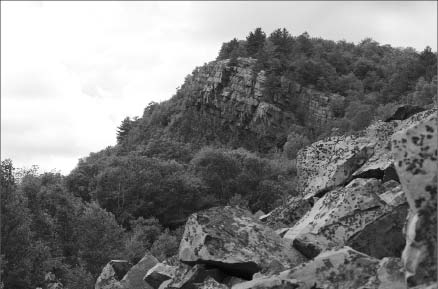Pele Mountain Resources‘ (GEM-V) shares got a healthy boost on the back of a positive preliminary economic assessment (PEA) that shows its Eco Ridge rare earth element (REE) and uranium project in Elliot Lake, Ont., could potentially be profitable.
The company released the PEA before markets opened on July 5, and saw its shares almost double, moving from 19¢ to close July 6 at 32¢, on 2.7 million shares traded.
The study, prepared by Roscoe Postle Associates, envisions the project as a 9,400-tonne-per-day operation, producing 708,000 lbs. total rare earth oxides (TREO) and 2.07 million lbs. uranium oxide (U3O8) a year. The mine would produce 10.7 million lbs. TREO and 24.9 million lbs. U3O8 over a 14-year life.
The assessment shows the project has a net present value of US$662 million at a 7.5% discount, with a 47% internal rate of return.
In a press release, Pele president and CEO Al Shefsky said he was “extremely pleased” with the PEA results, and believes that Eco Ridge could become a key source of REEs and uranium in the future.
“Our project economics are robust and compelling, and we are already planning our next steps to rapidly advance towards development and production,” Shefsky said, adding the project may become a “long-term source of heavy rare earth oxides (REO) outside of China,” which produces 95% of global REEs.
The Chinese government’s move to tighten exports and impose higher taxes on mining minerals has caused a surge in prices and a race to develop sources outside of China.
For the first five months of 2011, exports for rare earth elements dropped 8.8% from a year ago. However, the value of the January to May exports more than tripled to US$1.6 billion, according to the Wall Street Journal.
It would cost Pele US$212 million to get the mine started, and another US$195 million to keep it running. Operating cash costs are estimated at US$16 per lb. U3O8, net of REO credits.
Pele plans to develop Eco Ridge as an underground uranium mine with a surface processing plant. It also aims to use a mix of underground bio-leaching and surface heap-leaching to recover the materials.
The PEA shows recovery rates of 70% for U3O8, 35% for total heavy REO and 7% for total light REO.
Shefsky said he believes the recoveries could be improved to boost the project’s economics by optimizing leaching conditions, among other things.
According to the study, Pele would generate two-thirds of REO revenue from heavy REO (including yttrium and scandium oxides), which are forecast to be in short supply in the coming years.
The PEA used a long-term uranium price of US$85 per lb., which was estimated by a group of independent analysts. The current long-term contract price for uranium is US$65 per lb.
For REO, the study used a 6-month trailing average of daily prices, compiled by Asian Metal, starting from Jan. 1, 2011.
The company is working on a 7,000-metre drill program, with a goal of converting 5 million inferred tonnes into indicated tonnes, and adding 10 million tonnes in the inferred category.
The project has an indicated resource of 51.8 million lbs. TREO and 15.2 million lbs. U3O8, with 14.3 million tonnes grading 0.16% TREO and 0.048% U3O8. It has an inferred resource of 96.3 million lbs. TREO and 31.4 million lbs. U3O8, with 33.1 million tonnes grading 0.13% TREO and 0.043% U3O8.
The study forecasts Eco Ridge’s pre-tax cash flow at more than US$7 per fully diluted Pele share. Shefsky remarked, “We do not believe that our stock price currently reflects the value of this important asset.”
The company has 133 million shares outstanding, and a 52-week trading range of 9¢-69¢ per share.


Be the first to comment on "Pele shares surge on Eco Ridge’s PEA"